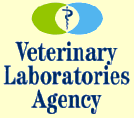



UK Poultry Disease Monthly Surveillance Report (to April 2005)
By Veterinary Laboratories Agency - This report monitors trends in the major endemic poultry diseases and utilises the farmfile and VIDA (Veterinary Investigation Disease Analysis) databases. The report is compiled using disease data gathered by the network of 15 VLA regional laboratories which carry out disease investigation in the field.
 April 2005 - Published June 2005 Highlights Further outbreak of goose parvovirus disease Fowl Pox confirmed |
Fowl Pox
Fowl pox was diagnosed in an adult Light Sussex chicken, from a flock of 20
that had been wheezing for several weeks. On examination, the respiratory
signs were found to be due to a yellow exudate that had accumulated in the
larynx, which was almost totally occluded.
There was also yellow plaque- like lesions in the mouth and pharynx and yellow and pale white nodules in the oesophagus. Fowl pox was confirmed by histopathology.
Waterfowl: Duck Viral Enteritis
The carcase of a 10-month of Muscovy duck was submitted to Winchester for post mortem examination, one of 6, which had died from a group of 8 similar birds. The affected birds were reported dull and fluffed up prior to death. The carcase was in good bodily condition. Post mortem examination revealed a haemorrhagic enteritis and diphtheritic cloacitis. Virus isolation yielded duck enteritis herpes virus, confirming the suspicion of duck viral enteritis. Preston also reported an incident.
Goose parvovirus
Goose parvovirus was suspected on a farm, which had bought in day old
goslings in 2004 from a unit, which was known to have had goose parvovirus
infection. 50% of the bought-in group were reported to have died in 2004
between 2 and 4 weeks of age. The majority of the survivors were killed for
the Christmas market but 20 were kept for breeding and mixed with 40 other
breeding birds on the farm.
No losses had occurred in the early part of the
2005-breeding season but deaths in goslings had started to occur at the
beginning of April. 60 goslings had died in a 4-week period. Clinically the
affected goslings had poor growth rates and terminally showed difficulty in
standing, rocking on their legs and shaking their heads before death around
14 days of age. Virus isolation is now in progress.
To read the full report please click here (PDF)
Source: Veterinary Laboratories Agency - June 2005








